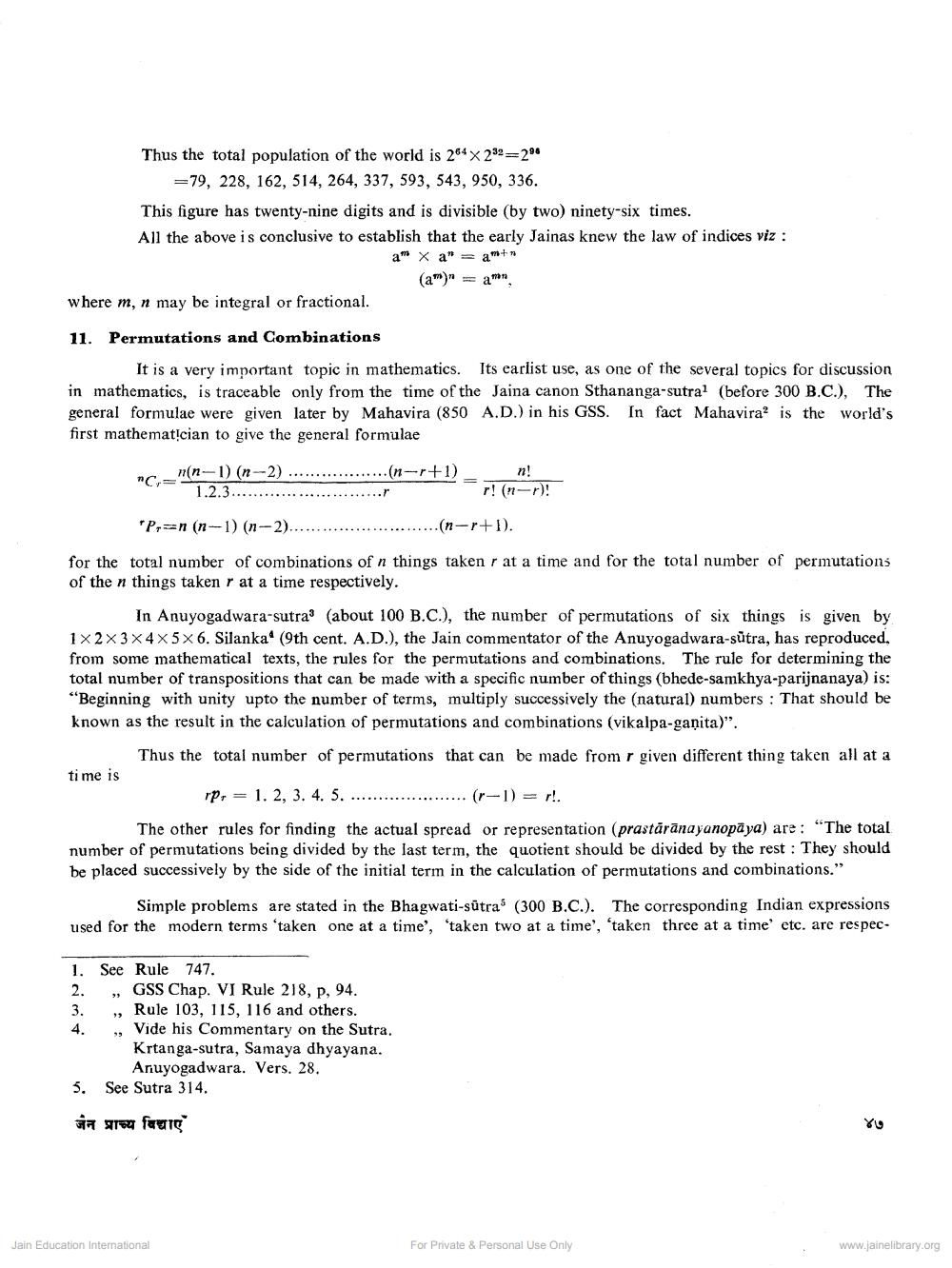________________
where m, n may be integral or fractional.
11. Permutations and Combinations
It is a very important topic in mathematics. Its earlist use, as one of the several topics for discussion in mathematics, is traceable only from the time of the Jaina canon Sthananga-sutra1 (before 300 B.C.), The general formulae were given later by Mahavira (850 A.D.) in his GSS. In fact Mahavira is the world's first mathematician to give the general formulae
(n-1) (n-2) 1.2.3......
'Prn (n-1) (n-2)...
.(n-r+1).
for the total number of combinations of n things taken r at a time and for the total number of permutations of the n things taken r at a time respectively.
ti me is
Thus the total population of the world is 264 x 232=290
=79, 228, 162, 514, 264, 337, 593, 543, 950, 336.
This figure has twenty-nine digits and is divisible (by two) ninety-six times. All the above is conclusive to establish that the early Jainas knew the law of indices viz :
a Xa" =
am+n am
(a)"
39
In Anuyogadwara sutra (about 100 B.C.), the number of permutations of six things is given by. 1×2×3×4×5×6. Silanka (9th cent. A.D.), the Jain commentator of the Anuyogadwara-sutra, has reproduced. from some mathematical texts, the rules for the permutations and combinations. The rule for determining the total number of transpositions that can be made with a specific number of things (bhede-samkhya-parijnanaya) is: "Beginning with unity upto the number of terms, multiply successively the (natural) numbers: That should be known as the result in the calculation of permutations and combinations (vikalpa-ganita)".
Thus the total number of permutations that can be made from r given different thing taken all at a
rn = 1. 2, 3. 4. 5. .............
(r−1) = r!.
The other rules for finding the actual spread or representation (prastārānayanopāya) are: "The total number of permutations being divided by the last term, the quotient should be divided by the rest: They should be placed successively by the side of the initial term in the calculation of permutations and combinations."
33
"C="
1. See Rule 747.
2.
3.
4.
55
Simple problems are stated in the Bhagwati-sūtra (300 B.C.). The corresponding Indian expressions used for the modern terms 'taken one at a time', 'taken two at a time', 'taken three at a time' etc. are respec
..(n-r+1)
GSS Chap. VI Rule 218, p, 94. Rule 103, 115, 116 and others.
Vide his Commentary on the Sutra. Krtanga-sutra, Samaya dhyayana. Anuyogadwara. Vers. 28.
5. See Sutra 314.
जन प्राच्य विद्याएँ
n!
r! (n-r)!
Jain Education International
For Private & Personal Use Only
૪૭
www.jainelibrary.org




